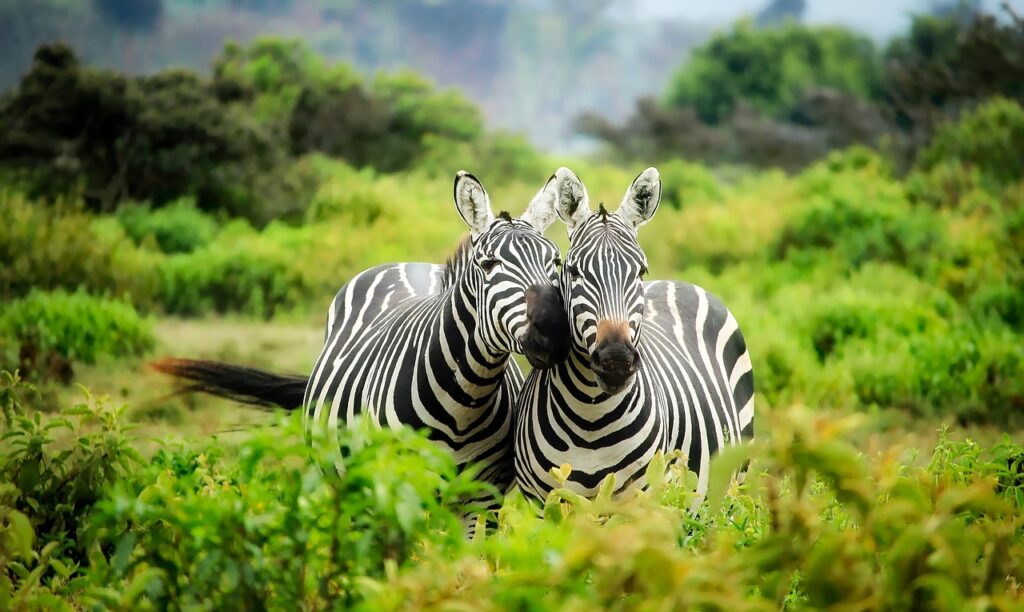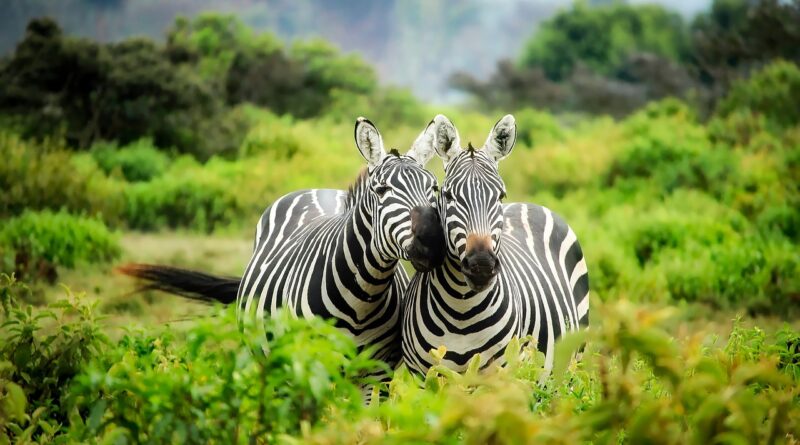Hobbies That Support Wildlife Observation And Birdwatching
Are you looking for a new hobby that allows you to connect with nature and support wildlife conservation efforts? Look no further than wildlife observation and birdwatching.
Not only do these hobbies provide a sense of peace and tranquility, but they also offer the opportunity to contribute to citizen science and conservation efforts. To get started, you’ll need some essential tools and equipment, such as binoculars, field guides, and a good pair of hiking shoes.
Once you have the necessary gear, you can start exploring local wildlife hotspots and habitats, observing and identifying different species, and recording your findings. By participating in these hobbies, you’ll not only develop a deeper appreciation for the natural world but also make a valuable contribution to the scientific community’s understanding of wildlife populations and habitats.
Benefits of Wildlife Observation and Birdwatching
Exploring the great outdoors through wildlife observation and birdwatching can provide a multitude of benefits. It enhances your appreciation for nature and improves your mental and physical health.
Engaging in these activities allows you to connect with nature and appreciate the beauty of the world around you. It also provides educational opportunities to learn about different species of birds and animals, their habitat, and their behaviors.
In terms of health benefits, wildlife observation and birdwatching can help reduce stress and anxiety levels, lower blood pressure, and improve cardiovascular health. It also encourages physical activity, especially when you’re walking through trails or hiking in search of different bird species.
These activities also promote mental wellness by helping you disconnect from technology and other distractions, giving you a chance to enjoy the peace and tranquility of nature.
Essential Tools and Equipment for Wildlife Observation and Birdwatching
Having the right gear is key to getting the most out of your time outdoors while spotting animals and birds. When it comes to wildlife observation and birdwatching, having the right tools and equipment can make all the difference in your experience.
Top brands for essential tools and equipment for wildlife observation and birdwatching include Nikon, Bushnell, and Vortex. These brands offer a range of binoculars, spotting scopes, and cameras that are designed specifically for outdoor enthusiasts who want to get up close and personal with nature.
However, if you’re on a budget, there are still plenty of DIY hacks and alternative gear options for wildlife observation and birdwatching. For example, you can make your own bird feeder using a recycled plastic bottle or create your own wildlife blind using natural materials found in your local area.
Other budget-friendly options include purchasing second-hand equipment or opting for less expensive brands such as Tasco or Celestron. With a little creativity and resourcefulness, you can still enjoy the wonders of nature without breaking the bank.
Finding Wildlife Hotspots and Habitats
Locating areas with a high concentration of wildlife can enhance the experience of nature enthusiasts who enjoy observing and studying animals in their natural habitats.
Exploring terrain and researching behavior are two ways to find these hotspots and habitats. For example, certain types of birds may be more likely to gather near water sources or in dense vegetation. Similarly, different species of mammals may be found in specific types of terrain, such as forests or grasslands.
It can be helpful to do some research on the behavior and habitat preferences of the wildlife you’re interested in observing. This can inform your search for hotspots and increase your chances of spotting animals in their natural environment.
Additionally, exploring terrain can be a fun and rewarding way to discover new habitats and observe wildlife. Whether it’s hiking in the mountains or kayaking through a wetland, getting out into nature and exploring new areas can lead to exciting wildlife sightings.

Identifying and Recording Species
You can easily identify and record the species you encounter in the wild with just a few tools and techniques.
One of the essential tools you need is a field guide. A field guide is a book that provides information on different species, including their physical characteristics, habitat, and behavior. It’s important to choose a field guide that is specific to the region you’re exploring to ensure accurate identification of the species you come across.
You can also use photography techniques to capture images of the species you observe. This allows you to analyze the images later and identify the species accurately. You can also use the images to create a record of the species you’ve encountered.
When identifying and recording species, it’s important to take note of the location, time, and date of your observation. This information can be recorded in a notebook or a digital app. By keeping a record of your observations, you can track changes in the species’ behavior and population over time.
Additionally, you can contribute to citizen science projects by submitting your observations to online databases. This helps researchers monitor wildlife populations and identify conservation efforts needed to protect these species.
With the right tools and techniques, you can easily identify and record the species you encounter, contributing to the conservation of wildlife and the environment.
Contributing to Citizen Science and Conservation Efforts
Contributing to citizen science and conservation efforts is crucial for protecting the environment and preserving biodiversity. As a hobbyist interested in wildlife observation and birdwatching, you have the opportunity to engage in a variety of volunteer opportunities that support these efforts.
Citizen science projects, such as monitoring bird populations or tracking migratory patterns, rely on the participation of individuals like you to collect data that informs conservation efforts. By participating in these projects, you can contribute valuable information that helps scientists and conservationists make informed decisions about protecting vulnerable species and habitats.
In addition to contributing to scientific research, engaging with your local community is another important way to support conservation efforts. Organizing or participating in local birdwatching groups can help raise awareness about the importance of protecting wildlife and habitats, while also fostering a sense of connection and stewardship among community members.
By sharing your observations and knowledge with others, you can help inspire and empower them to take action in support of conservation efforts. Overall, by participating in citizen science and community engagement, you can make a meaningful contribution to the protection of wildlife and the environment.
Frequently Asked Questions
How do you ensure that your wildlife observation and birdwatching activities do not harm the environment or disturb the animals?
To ensure eco friendly practices and avoid disturbing animal behavior, be mindful of noise levels, stay on designated paths, and don’t touch or feed the animals. Respect their habitat and leave it as you found it.
Can you recommend any tips for photographing wildlife during your observation and birdwatching activities?
When photographing wildlife, use a telephoto lens and tripod to capture clear, sharp images. Be patient, move slowly, and avoid disturbing the animals. Always respect their space and habitat, and use equipment suitable for birdwatching.
How can you get involved in local conservation efforts related to wildlife observation and birdwatching?
Looking to get involved in conservation efforts related to wildlife observation and birdwatching? Check out local volunteering opportunities and community engagement events. Make a difference in your community while pursuing your passions.
Are there any ethical guidelines or codes of conduct for wildlife observation and birdwatching that enthusiasts should follow?
As an enthusiast, it’s important to follow ethical guidelines and engage in responsible behavior during wildlife observation and birdwatching. Respect the animals’ habitat, avoid disturbing nesting sites, and maintain a safe distance to minimize your impact.
What are some of the risks associated with wildlife observation and birdwatching, and how can you mitigate them?
When observing wildlife or birdwatching, there are risks such as getting lost, encountering dangerous animals, or falling. Mitigate these risks by carrying a map, staying on designated trails, bringing a whistle, and wearing appropriate footwear and clothing. Safety measures can prevent accidents.
Conclusion
So, there you have it! You now know about the benefits of wildlife observation and birdwatching, the essential tools and equipment needed, how to find wildlife hotspots and habitats, how to identify and record species, and how to contribute to citizen science and conservation efforts.
Whether you’re looking for a new hobby or want to deepen your appreciation for nature, wildlife observation and birdwatching are excellent choices. They not only offer a chance to connect with the natural world but also provide opportunities to contribute to important research and conservation efforts.
So why not grab your binoculars and head out on your next adventure today? Happy birdwatching!

